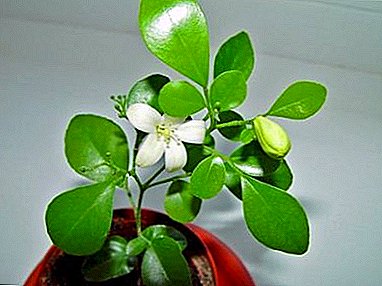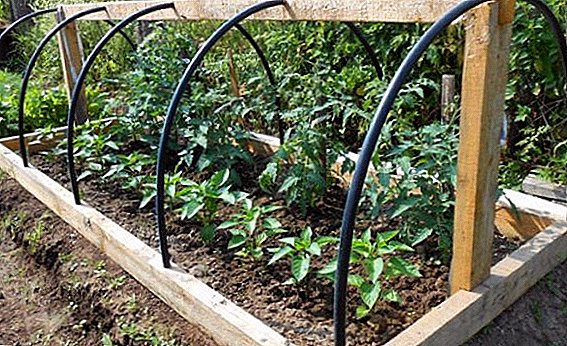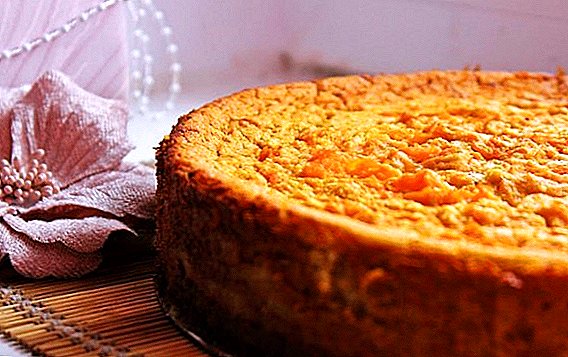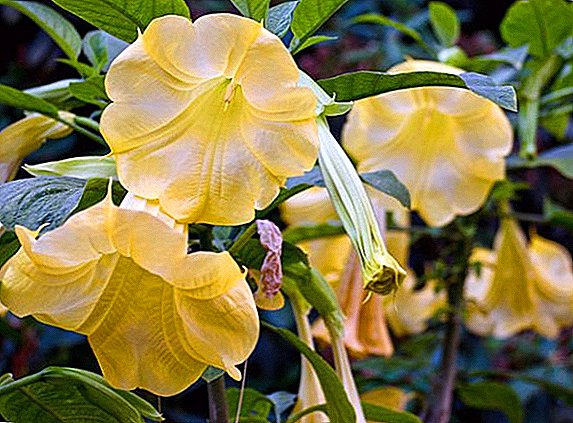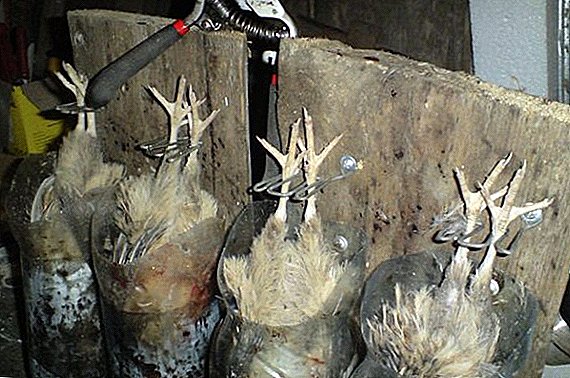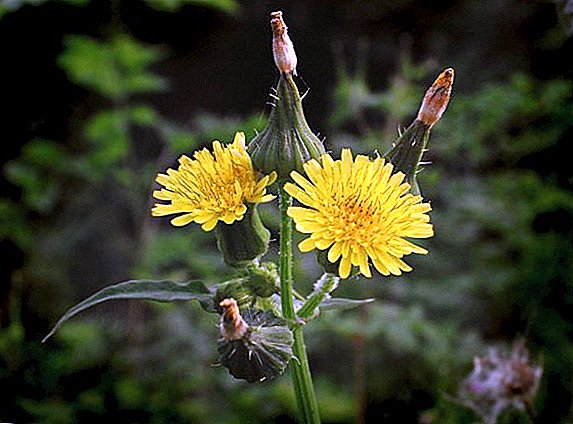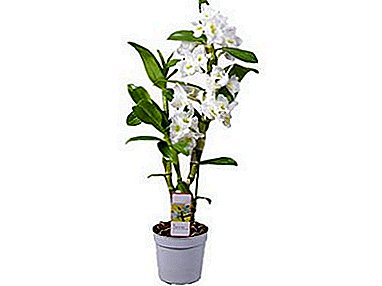
Dendrobium orchid is a bright colorful plant with a wonderful aroma. Therefore, its owners are so eager that as many as possible in their house were these flowers. The reproduction of the beautiful Dendrobium is not a big deal. And thanks to her, the house will be filled with paints, and at hand there will always be a wonderful gift for all occasions. Therefore it is worthwhile to boldly begin to reproduce the amazing Dendrobium orchid.
Breeding characteristics
The dendrobium orchid belongs to exotic plants of a symposium type. These plants have a certain feature, namely the presence of bulbs with their own roots. This makes their reproduction much easier than in monopoidal plants.
A photo
Then you can see what the flower looks like in the photo.




What makes this type of flower different from others?
Unlike the Phalaenopsis orchid, the Dendrobium orchid forms children well. Therefore, most often used reproduction kids.
Breeding methods and their description
At home, the dendrobium orchid propagates vegetatively in three ways..
- Reproduction "baby".
- Rooting cuttings.
- The division of the bush.
Soil for planting, you can buy ready-made in the store, and you can cook yourself.
For this:
- Pine bark must be chopped, you can use for this pruner. Pieces of bark should be 1–3 cm in size. They should be filled with boiling water and left to cool for a while. It is necessary to perform this in order to saturate the bark with moisture and disinfect it. As soon as the bark has cooled, the water must be drained. Small pieces of bark allow the substrate to dry for a couple of days.
- A small amount of coconut fiber, peat, perlite and sphagnum moss should be added to the bark. Adding moss and peat leads to waterlogging and rotting of the roots, so it’s worth considering using these materials carefully.
- You can add a handful of charcoal to 1 liter of bark.
- Homemade substrate must be disinfected. Spill boiling water and let it stand for 10-15 minutes. Wait until dry.
- Mix everything, the soil is ready.
For planting you need to pick a pot. It is advisable to take a small plastic capacity. In the pot be sure to make ventilation holes. Thanks to them, the ground will be ventilated, and the water will not stagnate.
How to prepare the plant?
For reproduction at home, preparation for breeding should begin one year before. To do this, cut the roots of the mother plant to the middle in several places. This will help the plant to form additional adventitious buds.
What time to choose?
The best time to grow orchids is spring, because at this time of year the plant begins a phase of active growth. Orchid accumulates a lot of useful substances in itself and therefore will more easily transfer the separation.
Step-by-step instruction: how to propagate at home or in a greenhouse?
Dividing bush
Reproduction by dividing the bush is carried out 1 time in 4 years.
- The bush must be removed from the pot.
- Orchids must be completely cleaned from the substrate.
 Be sure to unravel the roots.
Be sure to unravel the roots.- Dendrobium should be placed on a hard surface. Then, using a sharp, sterile knife, the bush is cut into pieces, so that each of them has at least 2 pseudo-trees. Surely, every “delenki” should have roots.
- Slices need to be treated with coal.
The division of the bush should be carried out only after a period of flowering.
Cuttings
Cutting the most difficult breeding method. Home conditions are not suitable for this mode of reproduction. It is necessary to build greenhouses and also need additional lighting.
- The pseudobulb must be separated from the uterine bush. It is cut right under the root. It should be cut into pieces, 10 cm each.
- Damage sites must be treated with garden pitch or cinnamon.
- Moss sphagnum should be moistened before planting. Then put in a sealed bag with a lock. Also as a greenhouse, you can use a plastic container with a lid or bottle
- On the moss need to expand the cuttings, a maximum of 2 pcs. in the package.
Conditions for rooting and development of a young plant:
- Scattered light.
- Temperature is 22-25 degrees.
- Keeping moss moisturized.
- Daily airing.
The roots should already appear in 2-3 weeks.
Important! For the reproduction of the dendrobium, you can use the old, already faded pseudobulbs.
We offer you to watch a video on the reproduction of orchid dendrobium cuttings:
Children
The baby can grow itself on ripe flower pseudobulbs. In this case, you just need to wait for the number of leaves to appear in it, usually 4-5 leaves are enough, and small strong roots will form. They should be at least 5-8 cm long.
In order to plant a baby dendrobium, it is necessary, slightly rolling, to separate from the stem. Baby should be easy to tear off. It is recommended to dry the damaged places on children during the day in the open air.
We invite you to watch the video on the reproduction of orchid dendrobium by children:
Difficulties
Dendrobium orchid is extremely sensitive to reproduction. When dividing the plant is subjected to enormous stress. It is not necessary to multiply the orchid, if it is often sick. This can lead to the death of the mother flower and babies. Another cause of death of the plant is considered insufficient spraying. It is responsible for the correct formation of the roots.
Further care
 Dendrobium has a bad effect on dry vegetation, dry air, lack of light and excessive moisture. Dendrobium orchids have many species, and each of them has its own preferences, but there are also general requests. Dendrobium prefers bright diffused light without direct sunlight. Do not tolerate drafts.
Dendrobium has a bad effect on dry vegetation, dry air, lack of light and excessive moisture. Dendrobium orchids have many species, and each of them has its own preferences, but there are also general requests. Dendrobium prefers bright diffused light without direct sunlight. Do not tolerate drafts.
Lighting
If the orchid flowers have a white or pale pink color, it means that they can withstand a lack of lighting much easier. They can be left on the northeastern window-sills without fail. If the flowers are bright red, yellow, pink, it means that such orchids are better placed on the windows of the south-east and south-west sides.
Watering
Watering can be superficial method or immersion. Watering should be boiled water. Water temperature should be slightly higher than room temperature. From April to September, it is recommended to combine watering with top dressing. But you need to feed not every watering, but after about 2-3 watering.
Important! Water should not fall on peduncles, flowers, leaf axils and young bulbs. If you do not comply with these conditions, the plant may rot. In case of liquid ingress, it should be blotted with a tissue.
Humidity
At higher temperatures, when water evaporates faster, a small part of the necessary moisture reaches the roots. At this time, be sure to adjust the humidity. You can put the pots on a tray with water and pebbles or wet moss. Also improve the spraying situation. It is advisable to spray early in the morning or in the evening so that drops of moisture do not lead to burns.
Fertilizers
Feed the dendrobium to start in April, and finish in September. Fertilizer can be added to the water that the flower is watered.. Or half an hour after watering spray them, or place the pot in the solution.
Concentration of fertilizer to do 2 times less than what is written on the package.
Observing all the conditions of reproduction and cultivation of dendrobium orchids, you can get the most beautiful plants. What will allow this flower to please the eye for many years.


 Be sure to unravel the roots.
Be sure to unravel the roots.